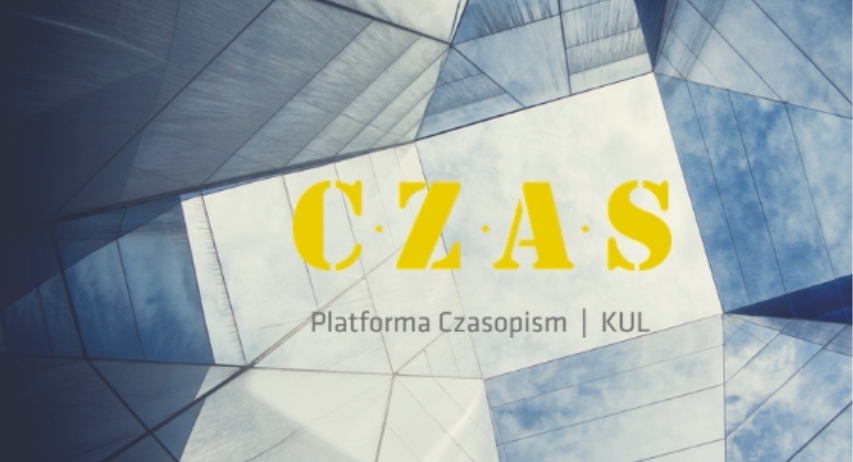"The Apostle of the Apostles," Prostitute or Penitent? A Typology of Mary Magdalene in the Homilies of Gregory the Great
Magdalena Jóźwiak
The John Paul II Catholic University of Lublin , Polandhttps://orcid.org/0000-0002-1253-1162
Abstract
Mary Magdalene, who is mentioned on the pages of the Gospels twelve times, is regarded as one of the most famous and stirring strong emotions women of the New Testament. In some religious circles to this day, one can still hear claims that Mary of Magdala was a prostitute. Others argue that Magdalene is the “Apostle of the Apostles” (Apostola Apostolorum) because she was the first person to bear witness to the risen Lord (e.g. Hippolytus of Rome, Jerome of Stridon). Pope Gregory the Great, on the other hand, combined three evangelical women into one figure in his two homilies: the nameless sinful woman (cf. Luke 7:37), Mary Magdalene (cf. Luke 8:2), and Mary mentioned in John 20:11 – into a single figure. Thus, Mary of Magdala was regarded as a prostitute. Gregory the Great’s theory became prevalent in Western Christianity over the next fifteen centuries. This paper aims to analyse homilies XXV and XXXIII by Gregory the Great and attempt to address the question of whether, for the popecommentator, Mary Magdalene is exclusively and mainly a symbol of the “convert prostitute?” This paper adopted the philological method. It concludes that perhaps the pope himself would have been astonished that for so many centuries, the most enduring legacy of his two aforementioned homilies is the image of Magdalene as a “convert prostitute” rather than the moral teaching he wanted to convey. After all, the commentator also juxtaposed Magdalene with the Shulamite from the Song of Songs, Eve, Simon the Pharisee, Peter, Zacchaeus and Dismas, and saw in her a “type” of a Christian of every era.
Keywords:
typology, Gregory the Great, homilies, Apostle of the Apostles, Mary MagdaleneReferences
Atwood, Richard. 1993. Mary Magdalene in the New Testament Gospels and Early Tradition. Europäische Hochschulschriften 23. Bern: Lang.
Augustinus, De doctrina christiana: Augustinus. 1865. “De doctrina christiana.” In Patrologiae cursus completus: Series latina. Edited by Jacques-Paul Migne, 34:15–122. Paris: Migne. Other edition: Augustinus. 1962. De doctrina christiana: De vera religione. Edited by Klaus
Detlef Daur and Josef Martin. Corpus Christianorum Series Latina 32. Turnhout: Brepols.
Backes, Julian R. 2017. “Apostola Apostolorum: Observations on the Proper of St. Mary Magdalene in the Breviarium Praemonstratense.” Antiphon: A Journal for Liturgical Renewal 21 (1): 66–71. (Crossref)
Bardenhewer, Otto B., 1895. Der name Maria. Geschichte der Deutung desselben. Biblische Studien I.1. Freiburg: Herder.
Benedict XVI. 2007. Encyclical Letter Spe Salvi (= SpS). https://www.vatican.va/content/benedict-xvi/en/encyclicals/documents/hf_ben-xvi_enc_20071130_spe-salvi.html.
Corbo, Virgilio C., 1974. “Scavi archeologici a Magdala (1971–1973).” Liber Annuus 24:5–37.
Danker, Frederick W., Walter Bauer, William F. Arndt, and F. Wilbur Gingrich. 2000. Greek- English Lexicon of the New Testament and Other Early Christian Literature. 3rd ed. Chicago: University of Chicago Press. (= BDAG).
Davidson, Benjamin. 1974. The Analytical Hebrew and Chaldee Lexicon. London: Bagster.
De Boer, Esther. 2000. Maria Maddalena. Oltre in il mito alla ricerca della sua vera identità. Torino: Claudiana.
De Luca, Stefano. 2009. “La città ellenistico-romana di Magdala/Taricheae. Gli scavi del Magdala Project 2007 e 2008: relazione preliminare e prospettive di indagine.” Liber Annus 59:343–562. https://doi.org/10.1484/J.LA.1.102174. (Crossref)
Eynde, Sabine van den. 2007. “Love, Strong as Death? An Inter- and Intratextual Perspective on John 20, 1–18.” In The Death of Jesus in the Fourth Gospel, edited by Gilbert van Belle, 901–12. Leuven: Leuven University Press; Peeters.
Grégoire le Grand. 2005. Homélies sur l’Évangile: Livre I: Homélies 1–20. Translated by Raymond Étaix, Bruno Judic, and Charles Morel. Sources chrétiennes 485. Paris: Cerf. Grégoire le Grand. 2008. Homélies sur l’Évangile: Livre II: Homélies 21–40. Translated by Georges
Blanc, Raymond Étaix, Bruno Judic, and Charles Morel. Sources chrétiennes 522. Paris: Cerf. Gregorius Magnus. Homiliae in Evangelia: Gregorius Magnus. 1999. Homiliae in Evangelia. Edited by Raymond Étaix. Corpus Christianorum Series Latina 141. Turnhout: Brepols. French translation: Grégoire le Grand, 2005. Homélies sur l’Évangile: Livre I: Homélies 1–20. Translated by Raymond Étaix, Bruno Judic, and Charles Morel. Sources chrétiennes 485. Paris: Cerf; Grégoire le Grand. 2008. Homélies sur l’Évangile: Livre II: Homélies 21–40. Translated by Georges Blanc, Raymond Étaix, Bruno Judic, and Charles Morel. Sources chrétiennes 522.Paris: Cerf. Polish translation: Św. Grzegorz Wielki. 1998. Homilie na Ewangelie. Warszawa: Oficyna Wydawnicza Viator.
Hieronymus, Commentarii in Sophoniam: Hieronymus. 1845. “Commentarii in Sophoniam.” In Patrologiae cursus completus: Series latina, edited by Jacques-Paul Migne, 25:1337–88. Paris: Migne. Other edition: Hieronymus. 1964. Commentarii in prophetas minores. Edited by Marcus Adriaen. Corpus Christianorum Series Latina 76 A. Turnhout: Brepols.
Hieronymus, Liber de nominibus hebraicis: Hieronymus. 1845. “Liber de nominibus hebraicis.” In Patrologiae cursus completus: Series latina, edited by Jacques-Paul Migne, 23:771–858. Paris: Migne. Other edition: Hieronymus. 1959. Liber quaestionum hebraicarum in Genesim. Edited by Paul de Lagarde. Corpus Christianorum Series Latina 72. Turnhout: Brepols.
Jóźwiak, Magdalena. 2021. “Illuminatrix – stella maris – domina? (św. Hieronim). Patrystyczna interpretacja imienia Maria – wybrane hipotezy.” Vox Patrum 80: 161–76. https://doi.org/10.31743/vp.13143. (Crossref)
Keener, Craig S. 2003. The Gospel of John: A Commentary. Peabody, MA: Hendrickson.
Klawek, Aleksy. 1951. “Imię Maria. Et nomen virginis Maria (Łuk. 1, 27).” Ruch Biblijny i Liturgiczny 4 (1–2): 56–58. https://doi.org/10.21906/rbl.2430. (Crossref)
Koehler, Ludwig, Walter Baumgartner, and Johann J. Stamm, trans. and ed. 1994–1999. The Hebrew and Aramaic Lexicon of the Old Testament. 4 vols. Leiden: Brill. (= HALOT).
Kubiś, Adam. 2018. “Metafora oblubieńcza w Ewangelii Janowej. Część 2: Mesjańskie zaślubiny (J 12–20).” Studia Gdańskie 43:39–59.
Kucharski, Jacek. 2021. Magdala i Maria Magdalena: Studium historyczne i egzegetyczno-teologiczne. Rozprawy i Studia Biblijne 55. Warszawa: Vocatio.
Lewis, Charlton T., and Charles Short. 1891. Harpers’ Latin Dictionary. New York: Harper & Brothers; Oxford: Clarendon.
Loffreda, Stanislao. 1976. “Magdala – Tarichea.” Bibbia e oriente 18:133–35.
Morgenthaler, Robert. 1958. Statistik des neutestamentlichen Wortschatzes. Zürich: Gotthelf-Verl.
Rigato, Maria-Luisa. 2011. Discepole di Gesù. Studi Biblici 63. Bologna: EDB.
Rosenthal, Franz. 1961. A Grammar of Biblical Aramaic. Porta Linguarum Orientalium 5. Wiesbaden: Harrassowitz.
Sabatier, Pierre. 1751. Bibliorum Sacrorum latinae versiones antiquae, seu Vetus Italica, et caeterae quaecunque in codicibus mss. & antiquorum libris reperiri potuerunt: quae cum Vulgata Latina, & cum Textu Graeco comparantur. Vol. 2. Remis: Florentain.
Schmoller, Alfred. 1989. Handkonkordanz zum griechischen Neuen Testament. 26th ed. Stuttgart: Deutsche Bibelgesellschaft.
Św. Grzegorz Wielki. 1998. Homilie na Ewangelie. Warszawa: Oficyna Wydawnicza Viator.
Tronina, Antoni. 1990. “Jeszcze o imieniu Maria(m).” Ruch Biblijny i Liturgiczny 43 (3–6): 127–30. https://doi.org/10.21906/rbl.2213. (Crossref)
Zorell, Franciscus. 1964. Lexicon hebraicum et aramaicum Veteris Testamenti. Roma: Pontificum Institutum Biblicum.
The John Paul II Catholic University of Lublin
Magdalena Małgorzata Jóźwiak – dr nauk humanistycznych (filologia klasyczna) Uniwersytetu Wrocławskiego, dr teologii (teologia biblijna) Papieskiego Wydziału Teologicznego we Wrocławiu, adiunkt w Katedrze Patrologii Greckiej i Łacińskiej Instytutu Nauk Teologicznych KUL. Jej badania naukowe skupiają się na pograniczu biblistyki i patrologii, ze szczególnym uwzględnieniem komentarzy biblijnych św. Hieronima. Tłumaczka tekstów patrystycznych, autorka kilku monografii oraz kilkunastu artykułów naukowych. Z ostatnich prac należy wyliczyć: „Pieśni o Słudze Pańskim” w interpretacji św. Hieronima ze Strydonu (2022), Serafiny w egzegezie biblijnej św. Hieronima ze Strydonu („Vox Patrum” 88 [2023] 113-131), A Lion in the Biblical Exegesis of St Jerome of Stridon on the Example of „Commentary on the Book of Amos” („Studia Patristica” 131, 313-325). Należy do Sekcji Patrystycznej przy Komisji ds. Nauki Katolickiej Konferencji Episkopatu Polski oraz jest członkiem Stowarzyszenia Biblistów Polskich.
https://orcid.org/0000-0002-1253-1162License

This work is licensed under a Creative Commons Attribution-NoDerivatives 4.0 International License.
The author(s) grant (s) to the Licensee a non-exclusive and royalty-free license in accordance with the provisions of the Appendix: LICENSE TO USE THE WORK







